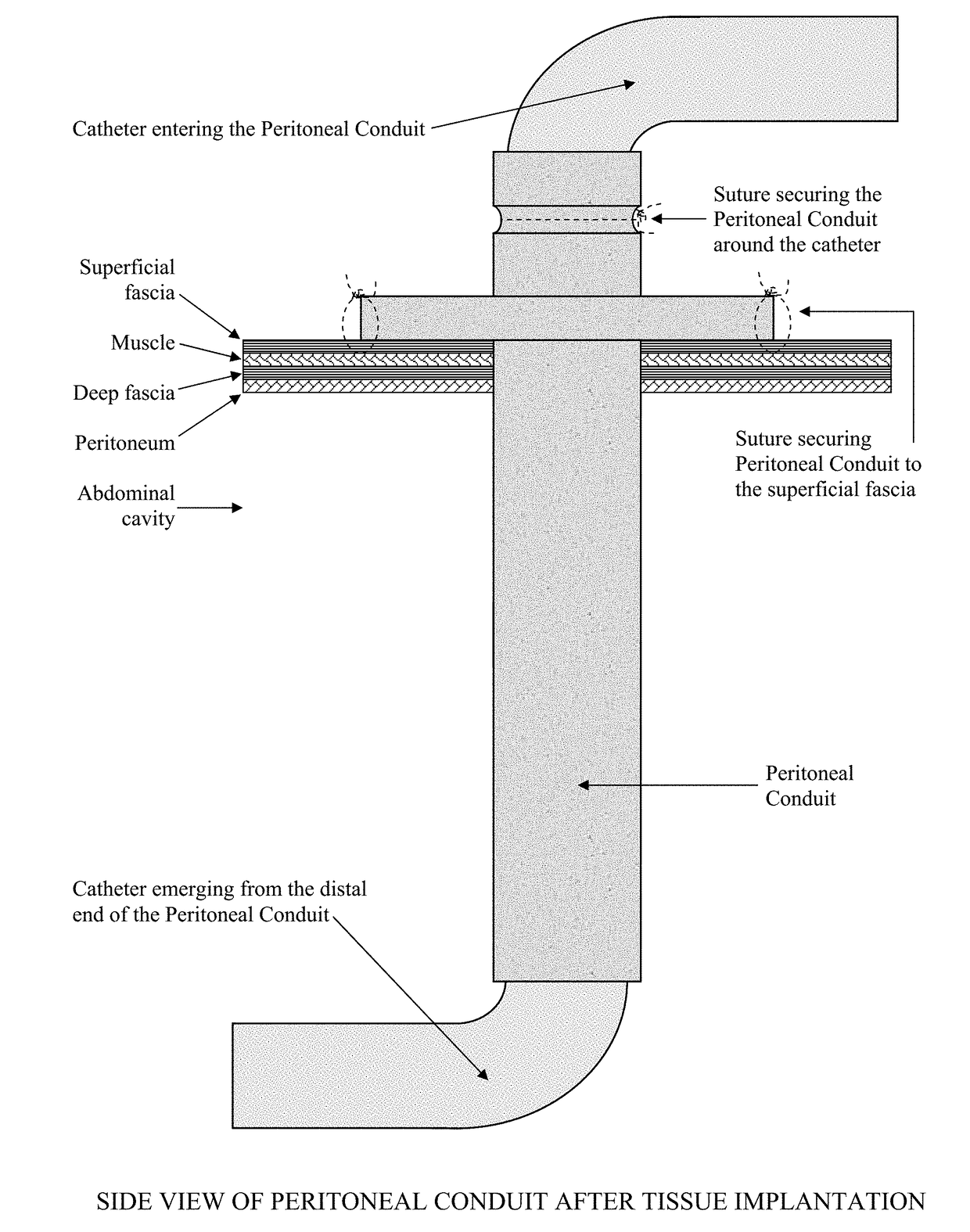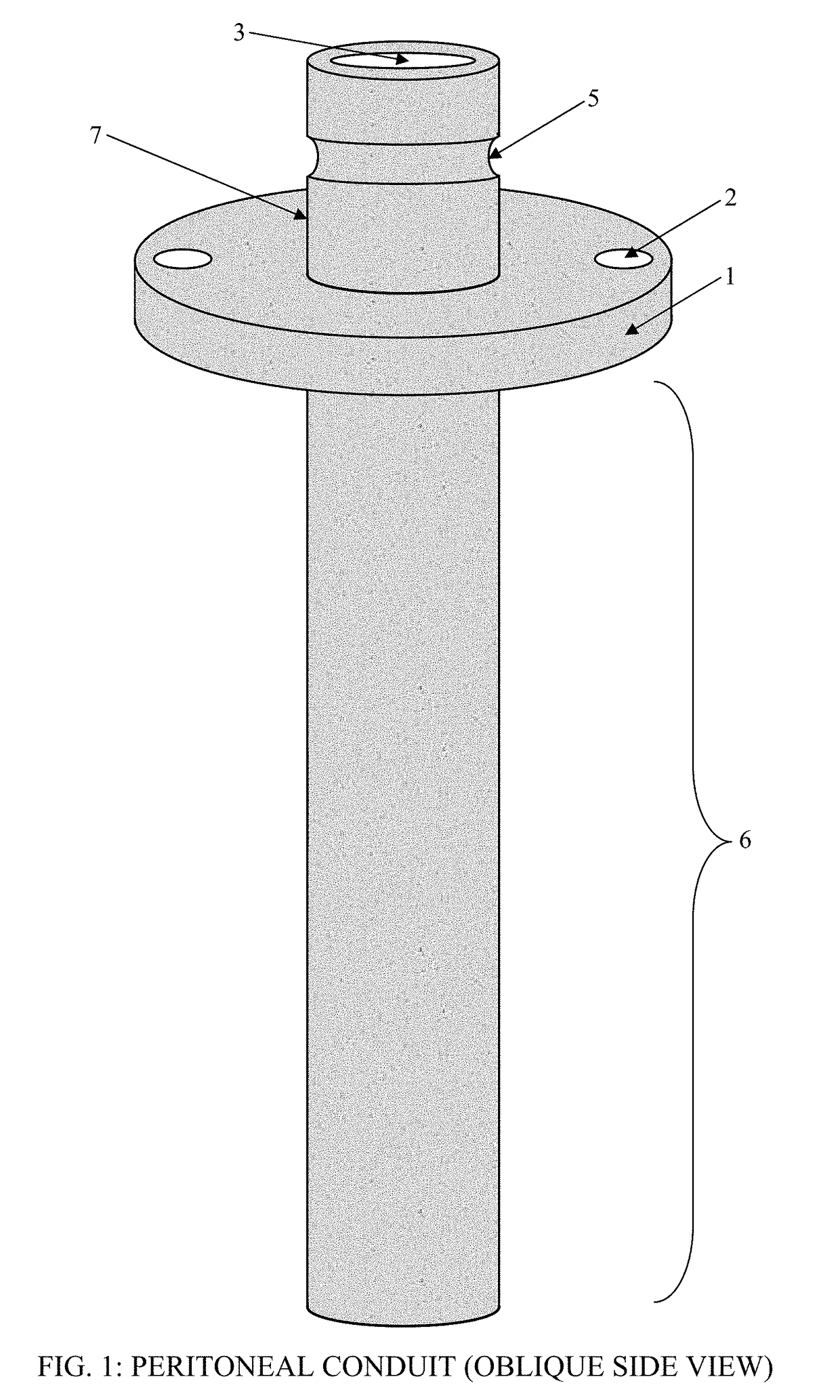Peritoneal Conduit
Inactive Publication Date: 2017-10-12
SEHATI NOUZHAN
View PDF6 Cites 2 Cited by
- Summary
- Abstract
- Description
- Claims
- Application Information
AI Technical Summary
Problems solved by technology
A variety of diseases can lead to abnormal accumulation of CSF within the nervous system which can lead to disabling symptoms and may even be fatal.
One challenge for the surgeon during the placement of these peritoneal catheters is that the material from which most of these catheters are made causes the surface of the catheters to be somewhat slippery with a tendency to slide easily across biological tissues.
The concern for the surgeon is that if the suture is tied too tightly around the thin and flexible catheter, then it can potentially partially or completely occlude the lumen of the catheter and lead to suboptimal drainage of CSF.
If the suture is tied too loosely around the catheter, then the tubing is at an increased risk of backing out as explained above.
Therefore, determining the appropriate amount of tension to be applied to the securing suture around the catheter can sometimes be somewhat challenging, especially to the less experienced surgeon.
In addition, even if the tubing is secured properly at the time of surgery, it can still potentially loosen at a later time, allowing the peritoneal catheter to back out of the abdominal cavity.
Another issue regarding these CSF diversion systems stems from their tendency to need revision over time.
These shunt systems are often placed with the intention for them to stay inside the patient's body for the remainder of their lives because the medi
Method used
the structure of the environmentally friendly knitted fabric provided by the present invention; figure 2 Flow chart of the yarn wrapping machine for environmentally friendly knitted fabrics and storage devices; image 3 Is the parameter map of the yarn covering machine
View moreImage
Smart Image Click on the blue labels to locate them in the text.
Smart ImageViewing Examples
Examples
Experimental program
Comparison scheme
Effect test
Example
[0018]The description of the numbered components in the above drawings are as follows: 1=Integrated collar, 2=Suture hole, 3=Hole running through the center of the conduit, 4=Cross section of the wall of the conduit, 5=Groove for securing suture in the proximal portion of the conduit, 6=Distal portion of the conduit, and 7=Proximal portion of the conduit.
the structure of the environmentally friendly knitted fabric provided by the present invention; figure 2 Flow chart of the yarn wrapping machine for environmentally friendly knitted fabrics and storage devices; image 3 Is the parameter map of the yarn covering machine
Login to view more PUM
 Login to view more
Login to view more Abstract
The Peritoneal Conduit is a medical device composed of tubing with an integrated collar made of a flexible and non-absorbable material for surgical implantation to create a conduit for passage of a catheter between two body cavities. The Peritoneal Conduit has a hollow center that spans from one end (shorter proximal portion) to the other end (longer distal portion). The catheter that will be being placed through the Peritoneal Conduit will enter into the proximal portion and will pass through the hollow center of the Peritoneal Conduit to emerge from the distal portion. The catheter is then secured to the Peritoneal Conduit using one suture that is tied around the groove in the proximal portion of the Peritoneal Conduit. The Peritoneal Conduit itself is secured in placed using two sutures that are placed through the integrated collar at the junction of the proximal and distal portions of the Peritoneal Conduit.
Description
CROSS-REFERENCE TO RELATED APPLICATIONS[0001]This application claims the benefit of U.S. Provisional Application No. 62 / 157,468, filed on May 5, 2015, the disclosure of which is incorporated herein by reference.STATEMENT REGARDING FEDERALLY SPONSORED RESEARCH OR DEVELOPMENT[0002]Not applicable.BACKGROUND OF THE INVENTION[0003]Cerebrospinal fluid (CSF) is a clear and colorless fluid that is constantly produced and reabsorbed by the central nervous system, and circulates inside of various spaces that are inside and around the brain and spinal cord. A variety of diseases can lead to abnormal accumulation of CSF within the nervous system which can lead to disabling symptoms and may even be fatal. Such conditions are remedied by surgical placement of a CSF diversion shunt, a variety of which exist depending on the exact nature of the disease (e.g. ventriculoperitoneal shunt, cyst-peritoneal shunt, lumboperitoneal shunt, syrinx-peritoneal shunt, etc.). During placement of a CSF diversion ...
Claims
the structure of the environmentally friendly knitted fabric provided by the present invention; figure 2 Flow chart of the yarn wrapping machine for environmentally friendly knitted fabrics and storage devices; image 3 Is the parameter map of the yarn covering machine
Login to view more Application Information
Patent Timeline
 Login to view more
Login to view more IPC IPC(8): A61M39/02A61M27/00A61B17/34A61M25/04
CPCA61M39/0247A61M25/04A61M27/006A61M2039/0273A61M2025/0286A61M2205/04A61M2039/0261A61B17/3421A61M25/0194A61M25/02A61M2025/0293A61M2210/1017
Inventor SEHATI, NOUZHAN
Owner SEHATI NOUZHAN
Who we serve
- R&D Engineer
- R&D Manager
- IP Professional
Why Eureka
- Industry Leading Data Capabilities
- Powerful AI technology
- Patent DNA Extraction
Social media
Try Eureka
Browse by: Latest US Patents, China's latest patents, Technical Efficacy Thesaurus, Application Domain, Technology Topic.
© 2024 PatSnap. All rights reserved.Legal|Privacy policy|Modern Slavery Act Transparency Statement|Sitemap



